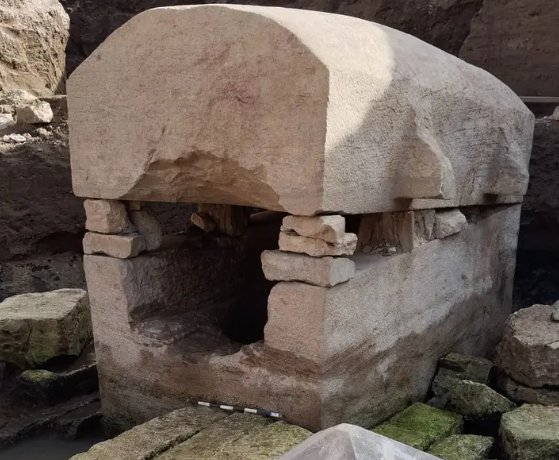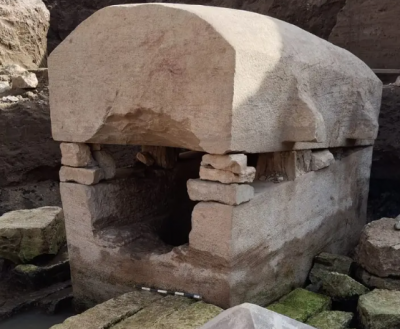Egyptian authorities have revealed new details about an archaeological treasure found beneath the site of a hospital currently under construction in the city of Benha, located in northern Egypt. The Ministry of Tourism and Antiquities has begun moving the treasure, which is a stone sarcophagus, discovered during excavation work at the site designated for building the Benha University Specialized Hospital in Qalyubia Governorate, to the Qalyubia Antiquities Area, in preparation for comprehensive maintenance and restoration work.
The Secretary-General of the Supreme Council of Antiquities, Dr. Mustafa Waziri, explained that the process of lifting and transporting the sarcophagus was conducted according to precise scientific principles and standards. He confirmed that a team of specialists from the Supreme Council of Antiquities and the Grand Egyptian Museum carried out initial restoration work at the discovery site, which included mechanical cleaning and strengthening of the sarcophagus and its lid.
Meanwhile, the Director of the Scientific Office of the Secretary-General of the Supreme Council of Antiquities, Mohamed Saidi, noted that the sarcophagus is made of quartzite stone, dating back to the reign of King Psamtik I, and weighs approximately 62 tons with its lid. He added that preliminary studies conducted on the sarcophagus indicated that it belonged to the overseer of the scribes during the reign of King Psamtik I from the 26th Dynasty, as there is an engraving beneath the lid depicting the cartouche of King Psamtik I.
The Supreme Council of Antiquities is expected to continue rescue excavation work until all operations at the site are completed and confirmed free of any other archaeological pieces. It is noteworthy that the project to construct the new Benha University Hospital is being executed on a plot of land covering 9,033 square meters, with a capacity of 450 beds. The first phase involves demolishing and removing all existing buildings from the proposed site for the hospital, followed by the preparation and approval of the functional program. The second phase of the project includes mechanical foundation work, the construction of two basements, a ground floor, and seven recurring floors.




